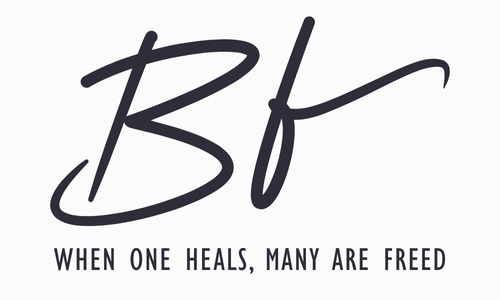Shame vs Guilt: Why They Feel Different but Get Mixed Up
Image Credit: Getty Images
Most of us use the words shame and guilt interchangeably. They sound similar, they feel uncomfortable, and in the heat of the moment it’s not always immediately obvious which one is at play. But while they often travel together, shame and guilt are not the same at all, and knowing the difference matters.
Understanding whether you’re in shame or guilt can be the difference between repairing relationships and withdrawing into silence, between self-compassion and self-condemnation.
What Shame and Guilt Really Mean
Researcher Brené Brown has a simple way of explaining the difference:
Guilt says: “I did something bad.”
Shame says: “I am bad.”
One is about behaviour and the other is about identity. Guilt can help us acknowledge when we’ve hurt someone and make amends. Shame convinces us we’re unworthy of love or belonging, so we withdraw or attack ourselves.
Carl Jung, the Swiss psychiatrist, framed guilt as part of the shadow, which is the unowned and hidden constellation of parts of us that we sometimes bump into and need to integrate.
“Everyone carries a shadow, and the less it is embodied in the individual’s conscious life, the blacker and denser it is.”
Shame, however, Jung saw as an existential wound that goes deeper, striking at the soul itself. Where guilt may point us toward repair, shame tells us that no repair is possible.
How Shame and Guilt Show Up in Relationships
Guilt and shame both carry emotional weight, but their impact on relationships is very different.
Guilt often motivates repair: apologising, trying again, reaching out.
Shame fuels withdrawal: hiding, shutting down, or entering cycles of destructive patterns.
Here are a few short stories from clients I’ve worked with (names changed for confidentiality) that show how guilt and shame can play out differently in relationships:
Shame in Love
Susan described how she often fell into relationships with people who criticised or belittled her. When things went wrong, she didn’t just think “I made a mistake.” Instead, she felt “I am never enough.”
That shame kept her trapped instead of leaving, she doubled down, hoping one day she might finally “earn” love. Shame convinced her that she was the problem, even when she was being mistreated.
Guilt and Fatherhood
Another client, Warren, spoke about feeling guilty as a father. He worried that he hadn’t always been present for his daughters, and when he raised his voice, guilt flooded in: “I shouldn’t have done that.”
But beneath the guilt sat shame: “I am a bad dad.” This shame made it hard for him to show up consistently, because instead of repairing, he would retreat. Guilt nudged him toward change, but shame whispered he wasn’t capable of being better.
Living with Shame
For Pamela, the core wasn’t a specific incident but a long-standing sense of defectiveness. She carried a deep belief that she was broken, that nothing she did could make her good enough. Where guilt might have pointed to an action to put right, shame told her the flaw was who she was. This left her isolated, exhausted, and unable to ask for what she truly needed in relationships.
Image Credit: A. C.
Why the Mix-Up Matters
When we confuse shame and guilt, we can get stuck in painful cycles:
Over-apologising for things we didn’t do wrong (shame disguised as guilt).
Withdrawing when we could be repairing (shame shutting down guilt’s healthy role).
Believing we’re permanently broken, rather than acknowledging we’ve simply made mistakes.
This confusion can erode relationships. Guilt can be considered healthy because it’s a moral compass that helps us take responsibility and reconnect. Shame, when mistaken for guilt, often blocks intimacy and keeps us hidden.
Untangling Shame From Guilt
The reality is that shame and guilt often arrive together. A mistake (guilt) can trigger the deeper story of not being enough (shame). But learning to name the difference is so powerful. It helps us see when we can lean into repair, and when we need compassion for the part of us that feels unworthy.
Therapy is one place where this untangling can happen. In a safe, non-judgemental space, shame can be brought into the light, and guilt can be softened into repair rather than punishment.
If you often find yourself weighed down by shame or guilt, and especially if it’s impacting your relationships, you don’t have to figure it out alone.
I can help you untangle shame from guilt, so you can move from self-condemnation toward self-understanding, from withdrawal toward connection.
I offer both online therapy across the UK and in-person sessions in Dorset.
References
de Hooge, I. E., Breugelmans, S. M., Wagemans, F. M. A., & Zeelenberg, M. (2018). The social side of shame: approach versus withdrawal. Cognition and Emotion. 32(8), pp. 1671–7.
Tangney, J., Miller, R., Flicker, L., & Barlow, D. (1996). Are Shame, Guilt, and Embarrassment Distinct Emotions? Journal of Personality and Social Psychology. 70, pp. 1256-69.



